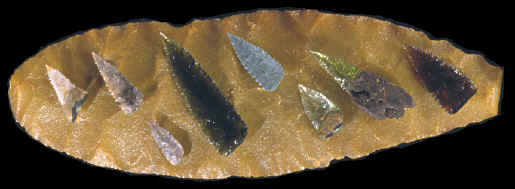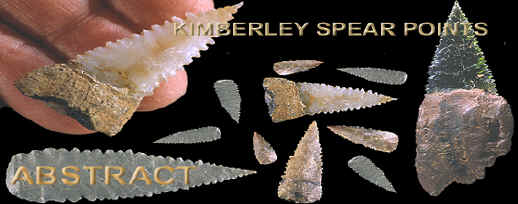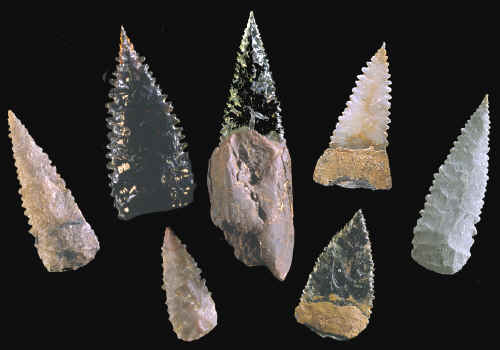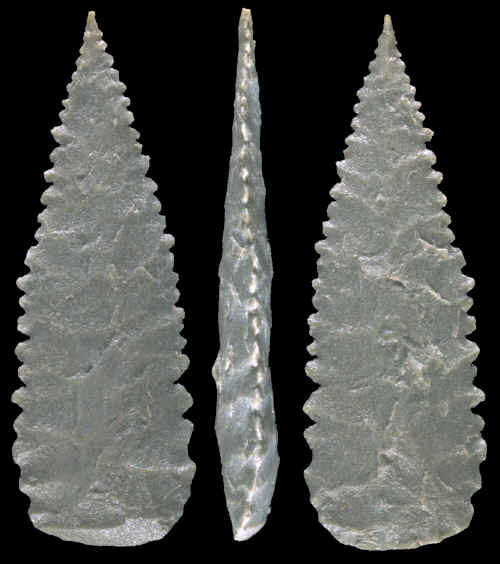|
|
|
|
|
"Many
pre-historians judge the bifacially flaked Kimberley point to be
Australia's most aesthetically appealing type of stone implement."---1999,
John Mulvaney & Johan Kamminga, p.238.
KIMBERLEY Kimberley points are Australia's most famous flaked stone artifacts. They were named after the semi-arid northwest region called the Kimberley Plateau. The aboriginal people living there made the first examples sometime between A.D. 500 and AD. 1000. They continued to be made until European contact and as tourists items in recent times. |
|
|
Kimberley points are projectile points that were attached to the ends of spears on foreshafts. The foreshafts measure between (3 feet 3 inches to 4 feet 11 inches ( 1 and 1.5 meters) long and the spear shaft measured between 4 feet 11 inches to 6 feet 7 inches ( 1.5 and 2 meters) long. The point was hafted into a notch with resin that was usually obtained from porcupine grass. The resin was heated and applied for several centimeters down the foreshaft. No other hafting material was used. |
|
| CONTINUE ON TO PAGE TWO | |
|
"REFERENCES"
1949,
Mitchell, S.R., "Stone-Age Craftsmen, Stone Tools & Camping
Places of the Australian Aborigines" pp. 62-64. |
|



